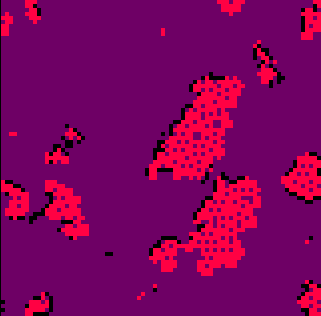
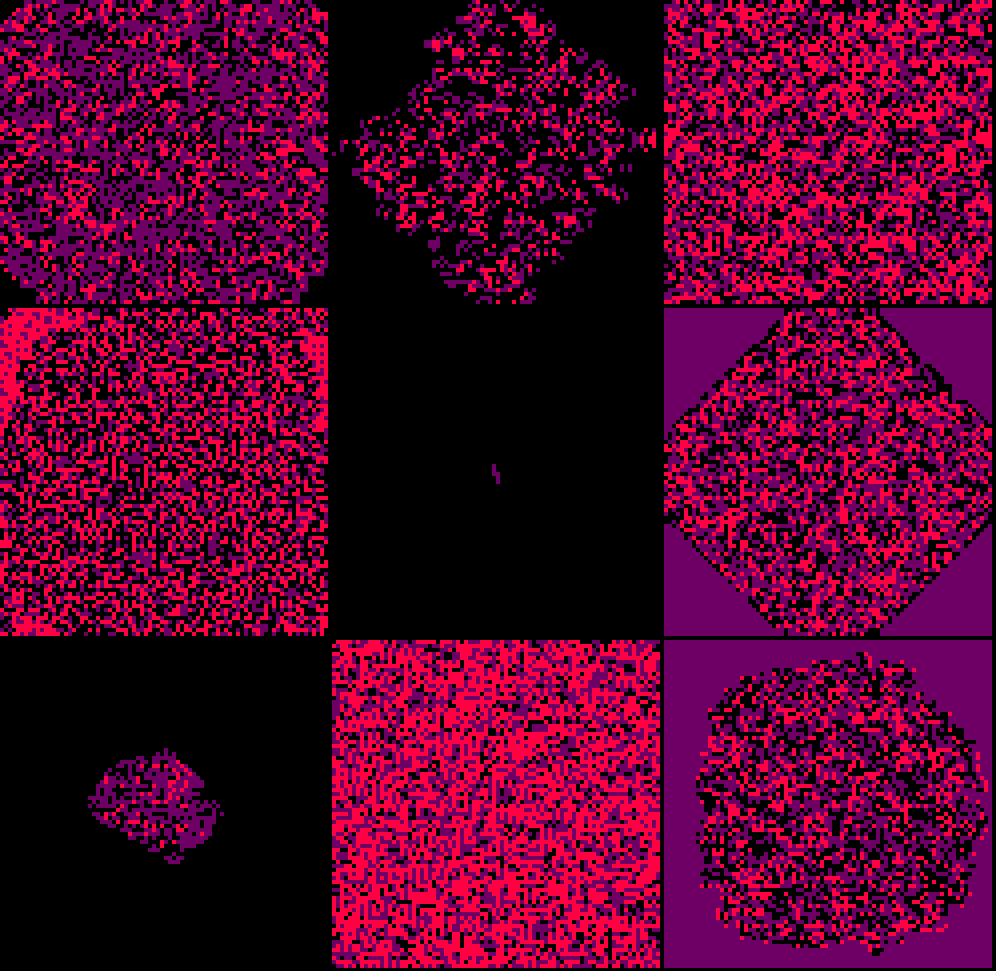
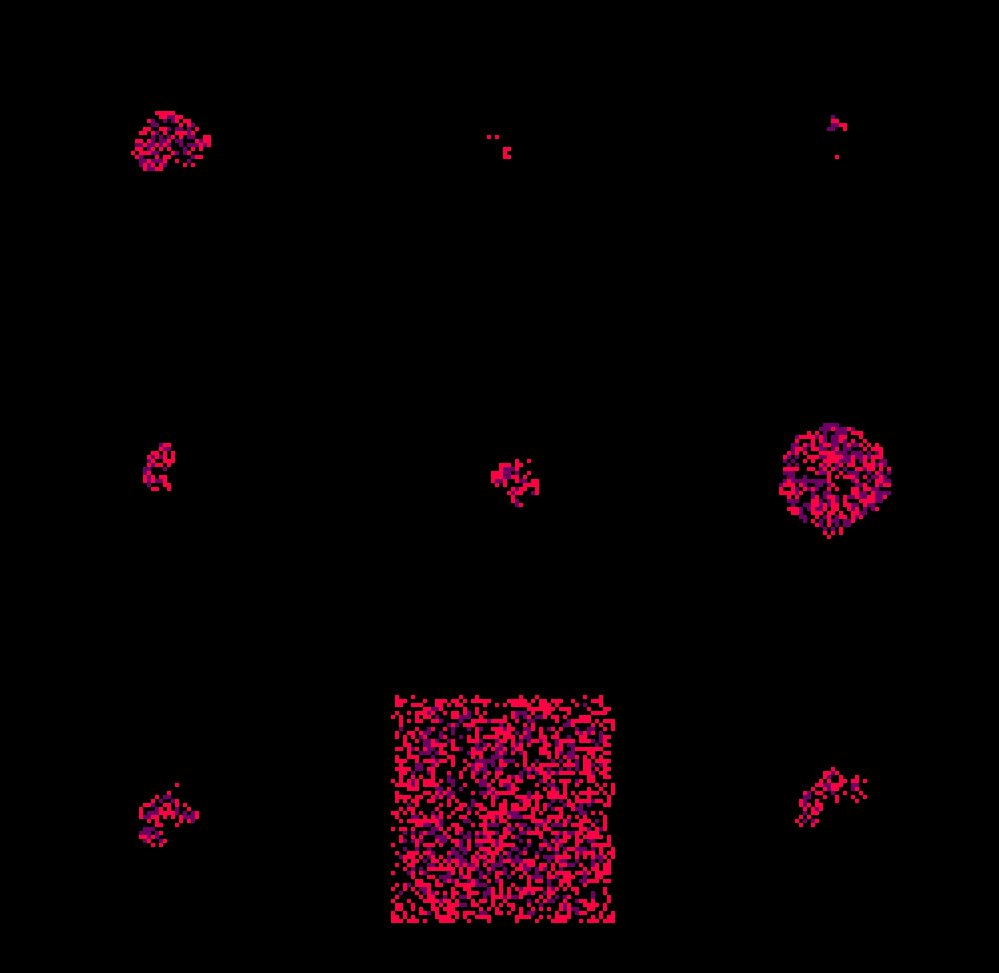
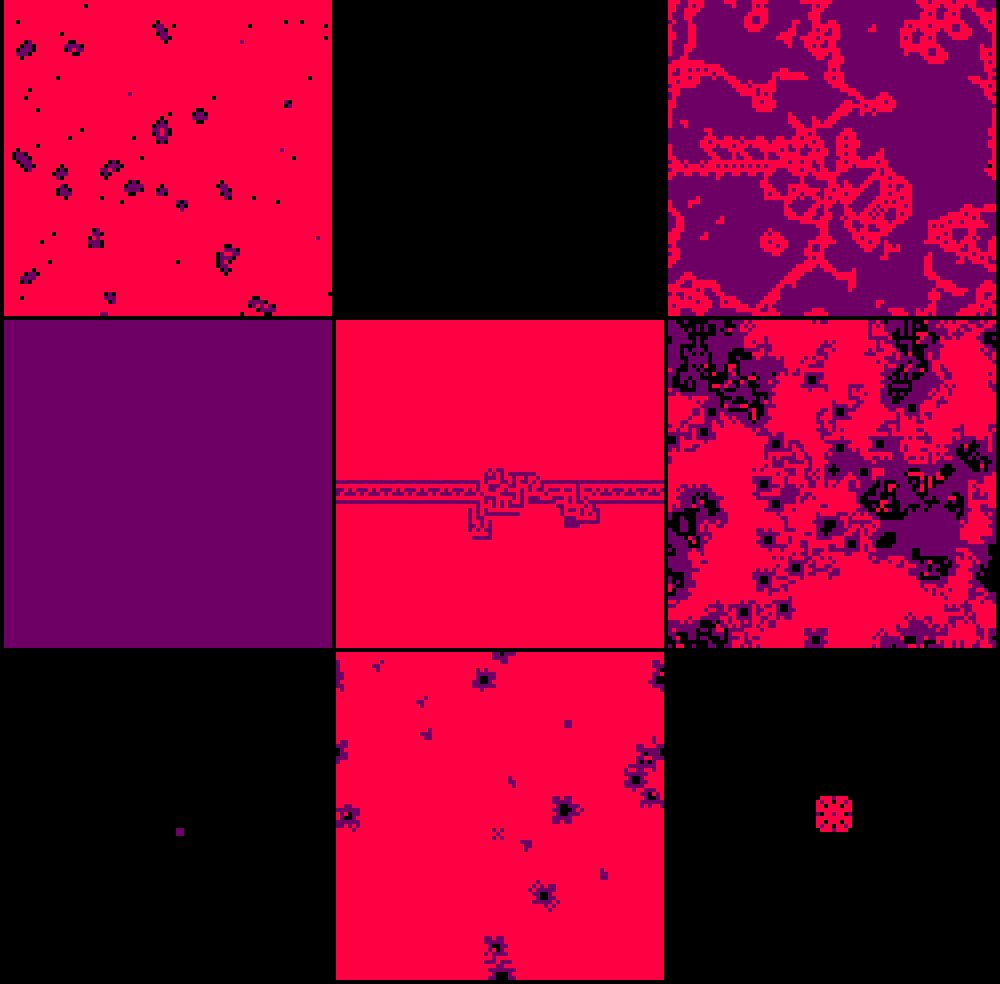
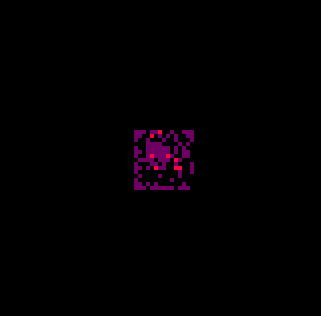

Evolving Cellular Automata
Another project from Loren Schmidt, this is a rule-generator for cellular automata.
Cellular automata are handy, compact examples of emergent effects. The most well-known example is Conway’s Game of Life, which is a two-state cellular automata with the rules “B3/S23″. Cells are Born if they have three neighbors, and they Survive if they have 2 or 3. Other rules are possible: “B36/S23″, “B36/S125“, and “B4678/S35678“ are a few of the more interesting known rules.
This rule generator creates three-state automata, which opens up even more possibilities. It also uses evolutionary algorithms to create the next generation of rules: click on a pattern and get a set of rules similar to that pattern.
You can also save the rules you like in a numerical format you can use elsewhere, or go back to a saved rule and try evolving down a different path.
